Question More, Action Knowledge.
Remember, at QMAK, we don’t just teach; we empower. We don’t just inform; we inspire. We don’t just question; we act. Become a Gold Member, and let’s unlock your child’s full potential, one question at a time.
![]() Imagine you’re at a carnival, and you come across a game where you can win a stuffed animal. The sign says “Win a Prize!” in big, bold letters. Excited, you decide to give it a try. But what if the sign had said “Don’t Miss Out on a Prize!” instead? Would you still feel the same level of excitement and motivation to play?
Imagine you’re at a carnival, and you come across a game where you can win a stuffed animal. The sign says “Win a Prize!” in big, bold letters. Excited, you decide to give it a try. But what if the sign had said “Don’t Miss Out on a Prize!” instead? Would you still feel the same level of excitement and motivation to play?
Welcome to the fascinating world of framing effects, where the way information is presented can drastically change how we perceive and respond to it!
Framing effects occur when the way information is “framed” or presented influences our thoughts, feelings, and decisions about it. It’s like looking at the same picture but through different colored lenses – the content is the same, but our perception of it can shift depending on the frame.
Framing effects can happen in all sorts of contexts, from how a news story is reported to how a salesperson pitches a product. The way something is framed can make us feel more positive or negative about it, more likely to take risks or play it safe, and even change our behavior without us realizing it!
![]() One of the most common types of framing is positive versus negative framing. Positive framing focuses on the potential gains or benefits of a situation, while negative framing emphasizes the potential losses or drawbacks.
One of the most common types of framing is positive versus negative framing. Positive framing focuses on the potential gains or benefits of a situation, while negative framing emphasizes the potential losses or drawbacks.
For example, let’s say you’re trying to convince your friend to go skydiving with you.
You could frame it positively by saying “Imagine the incredible rush of adrenaline and the feeling of flying through the clouds!”
Or, you could frame it negatively by saying “Don’t miss out on this once-in-a-lifetime opportunity to conquer your fears!”
Both frames are describing the same activity, but they evoke different emotions and motivations. Positive framing tends to make us feel more optimistic and willing to take risks, while negative framing can make us feel more cautious and risk-averse.
![]() Another way framing can influence us is by setting a reference point that shapes our perspective.
Another way framing can influence us is by setting a reference point that shapes our perspective.
For instance, if a store advertises a product as “50% off,” we tend to see it as a great deal because the reference point is the original, higher price. But if the same product is framed as “50% more expensive than our competitor,” we might perceive it as overpriced!
Framing can also tap into our emotions to sway our opinions.
Politicians often use emotional framing to rally support for their policies, like framing a tax cut as “putting more money back in the pockets of hardworking families” or framing a social program as “providing a safety net for our most vulnerable citizens.”
While framing effects can be used for good, like encouraging healthy behaviors or promoting social causes, they can also lead us astray if we’re not careful. Some consequences of framing effects include:
Biased decision-making: Framing can make us more likely to choose options that align with the frame, even if they’re not objectively the best choice.
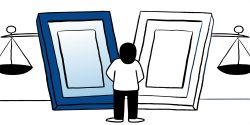
Skewed risk perception: Framing can make us more or less willing to take risks, depending on whether potential gains or losses are emphasized.
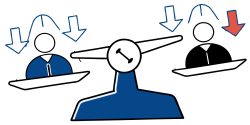
Social influence: The way a situation is framed can shape how others perceive and respond to it, potentially leading to groupthink or conformity.

Manipulation: Framing can be used to manipulate people’s opinions or behaviors, like in propaganda or deceptive advertising.
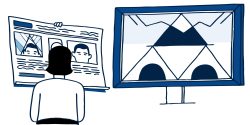
So how can we avoid falling victim to sneaky framing effects?
Here are some tips:
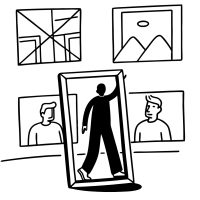
Simply recognizing that framing can influence our perceptions is a big step towards breaking free from its spell!
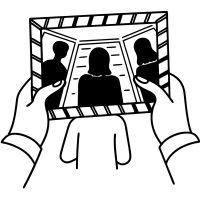
Try to look at situations from different angles and consider how the framing might be influencing your opinion.
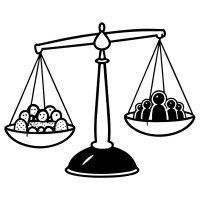
Don’t get too caught up in how something is presented – instead, try to evaluate the core content and evidence objectively.
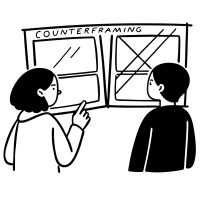
Actively challenge the framing of information by considering alternative viewpoints or reframing it in a different light.
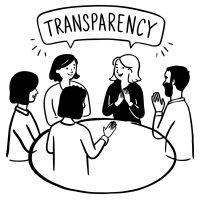
Encourage open and honest communication to reduce the potential for framing to distort information or decision-making.
It’s never too early to start teaching kids about the power of framing effects!
Here are some fun ways to introduce the concept:
Teacher’s Note: By helping kids develop media literacy and critical thinking skills, we can empower them to navigate a world full of framing effects with confidence and clarity.
While it’s important to be aware of how framing effects can influence us, we can also harness their power for personal growth and success.
Here are some ways to use framing to your advantage:
By understanding the power of framing effects and using them strategically, we can shape our own perceptions and experiences in ways that support our personal growth and success. So go forth and frame your world in a way that empowers and inspires you – just be sure to keep a critical eye out for any sneaky frames trying to lead you astray!
Below are three math problems and critical thinking exercises focused on Framing Effects, specifically designed for three age groups: Elementary, Middle School, and High School students. These exercises go beyond standard math problems by encouraging deeper analysis and reflection on how biases can influence decision-making.

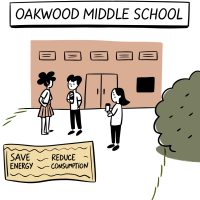

Objective: To practice reframing situations from different perspectives.
Objective: To analyze and counter framing effects in media and advertising.
Objective: To identify framing effects in real-world examples.
Objective: To practice framing information in different ways and recognize the effects.
Objective: To explore the consequences of different framing choices in decision-making.
The Sixth Sense offers an extraordinary demonstration of how framing effects shape our perception and decision-making. M. Night Shyamalan’s masterful storytelling creates a perfect case study of how the presentation of information influences our interpretation of events.
As we follow Dr. Malcolm Crowe’s interactions with young Cole Sear, the film subtly guides viewers to make assumptions based on carefully presented partial information.
The movie’s famous twist ending forces students to confront how their minds filled in gaps and made connections based on how the story was initially framed, rather than what was actually shown.
This revelation provides a powerful springboard for discussing how framing effects influence our daily lives – from how news headlines shape our opinions to how marketing messages affect our choices.
The film’s brilliant construction allows students to experience firsthand how their own minds can be led to conclusions through selective presentation of information.
Ratatouille serves up a delicious exploration of the framing effect through its story of how presentation and context shape our perceptions of quality and value.
Through Remy’s journey from sewers to fine cuisine, students witness how the same cooking talent, when framed differently, can either disgust or delight depending on whether people see “a rat in the kitchen” or “a gifted chef who happens to be a rat.”
The film demonstrates the framing effect most powerfully through Anton Ego’s transformative tasting of Remy’s ratatouille – a humble peasant dish reframed as haute cuisine that transports the critic back to childhood memories.
As viewers follow Remy’s creative reframing of traditional dishes and perceptions, they learn how the way we present choices and information fundamentally shapes how others receive them.
Through its celebration of culinary artistry and breaking prejudices, the film shows why understanding the framing effect becomes crucial for challenging established perceptions and creating new possibilities in any system.
(Verse 1)
Step right up, to the carnival of the mind
Where the frames we use, can make us blind
The way we present, can make us feel
Positive or negative, the frames are real
(Chorus)
Framing effects, they’re all around
Shaping our thoughts, without a sound
The power of perception, in every frame
Changing our behavior, it’s not a game
(Verse 2)
Gains or losses, what’s the focus?
Reference points, can make us notice
Emotions tapped, to sway opinions
Politicians use it, in their dominions
(Bridge)
But the consequences, can be dire
Biased decisions, like a wildfire
Skewed risk perception, social influence too
Manipulation, it’s not good for me and you
(Chorus)
Framing effects, they’re all around
Shaping our thoughts, without a sound
The power of perception, in every frame
Changing our behavior, it’s not a game
(Verse 3)
To break free, from the framing spell
Awareness is key, perspectives to tell
Focus on substance, use counterframes
Transparency promoted, in all our aims
(Bridge)
Teach the kids, with examples grand
Perspective games, visual aids in hand
Discuss emotional appeals, encourage critical thought
Real-life instances, let the lessons be taught
(Chorus)
Framing effects, they’re all around
Shaping our thoughts, without a sound
The power of perception, in every frame
Changing our behavior, it’s not a game
(Verse 4)
Harness the power, for personal growth
Positive framing, reframe setbacks both
Control your narrative, use loss aversion too
Focus on velocity, build leverage true
(Outro)
Practice reciprocity, offer value first
Framing effects, they can quench your thirst
Shape perceptions, inspire with every word
But keep a watchful eye, for the frames that blur
Framing effects, a fascinating world!
Remember, at QMAK, we don’t just teach; we empower. We don’t just inform; we inspire. We don’t just question; we act. Become a Gold Member, and let’s unlock your child’s full potential, one question at a time.